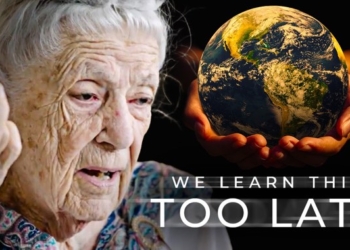
A famous author once stated that the idea of true prayer is one that involves a spiritual transaction between the Creator (God) and us. When we think about it, this is not far from the truth. When we pray, we do it with the intention that higher power, be it God or Jesus, can hear us and will answer them if not now then someday. We do it with the concept of Faith in our hearts.
Many of us hear the words “have faith, it will work out” many times, be in from a friend, in church, from a teacher or a family member. Faith is defined as an assurance and confidence, in God. Used widely by people to encourage one because it was first used in the Bibles New Testament, one out of the two sections of the Bible.
The Idea of Faith
Translated directly from the Greek word “Pistis”, click here for more information about this. First derived and used together with any story that entailed the idea of trusting and having confidence in Jesus Christ or God, it gave people a sense of hope and belief that things will always work out for the good.
In the Bible, it refers to the things that have not been seen but that you know of and should have the assurance of receiving. The invisible spiritual things. Faith comes through prayer. When people pray they go in front of their saviors with the belief that he is there for them and their prayers, to most, are like a conversation with him and then. It is a very personal and specific thing to the person doing it.
There are no hard and fast rules to prayers, anyone can do it, loudly, silently, as a song, as a hymn, while sleeping, while walking, sitting, you name it. It is something that belongs to everyone whether they are believers or not. This is what the bible teaches, and this is what the churches teach as well.
The idea behind prayer is that one need not worry if it will happen or not, they simply need to present their words to a higher power, whomever they believe in, and know that it will be heard and dealt with. An example of faith from the scriptures can be one from the New testament.
When two men came up to Jesus and asked him to heal their blindness, he asked them if they believe that he is going to do this. Cure them of their blindness. To which they answer “yes, Lord”. He proceeded to touch their faces and eyes and said that through their faith in him, they were healed and could see again. The key takes away here is, Faith usually comes before prayers and It is increased through prayer and studying of the Bible and its scriptures and all its stories included in both the Old and the New testament: https://hisdearlyloveddaughter.com/bible-study-tips-in-depth-bible-study/.

Different Stages of Faith
According to various online resources, there are different stages of faith. There are no hard and fast written rules or information that states that everyone will go through these 6 stages, however, it has been seen to be of a high probability that people may.
The first stage is an Intuitive or Projective one: This one usually takes place during the early stages of pre-school years for an individual and entails a state of confusion and high impressionability through rituals and stories.
The second stage is based on a Mythic or Literal one: this is where the information that is given to the individual is accepted to conform with social norms and still happens during the periods one goes to school.
The Synthetic or Conventional stage is the third one: and is the stage where the faith that is assimilated is concreted in the belief system with the forgoing of embodiment and is replaced by and authority in individuals that represent one's beliefs, often during the adolescent periods.
The Reflective or Individuate stage if the fourth in line: here the individual(s) analyze critically the existing system and adopted faith within it. Typically, the strengthening of one’s faith starts to happen at this stage as they step into early adulthood and start having needs, and experiences.
The Fifth Stage is the Conjunctive Faith one: where people start realizing the limits of logic, and the various “mysteries” of life, they tend to go back to the scriptures and stories as symbols of their adopted faith. Almost like a negotiation during their mid-life.
The final stage is one of Universalizing faith: which is the “enlightenment” stage and starts to understand the universal principles of service to others, compassion and love usually go through this after they turn to their mid-40s and mid-60s, and have no more doubts about anything. They just live life without questioning it.
Learning How to Pray
The idea of prayer can be translated by many people in different ways. Some refer to it as a conversation with God, others may say it is asking God for things in life, some may also refer to it as a form of guidance, others don’t talk they just listen, while the opposite is true too. When one prays regularly, it is almost like you are developing your spiritual consciousness to hear messages and to be at peace with one’s self.
In some ways, it is like the act of meditation. When we meditate, we sit still in one position for as long as we can or desire, and we listen and focus our minds on one thing, and brush aside any thoughts that may come almost like clouds that get brushed with the wind.
When various thoughts, emotions, and feelings come to our mind we try and ignore them or block them from interrupting our focus. Daily Prayers are much in the same way because they are a conversation between two entities. You and God. You and a higher power. You and the Universe, whatever you may want to call it.
There is no set time to pray or any set way of doing it, it is all an individual and personal act. Do it whenever you are comfortable. Do it when you need guidance, do it when you want peace of mind, do it before a job interview, whatever comes naturally and feels the rightest thing to do, is prayer. You can talk, whisper, sing it or shout it out. It is all prayer.















